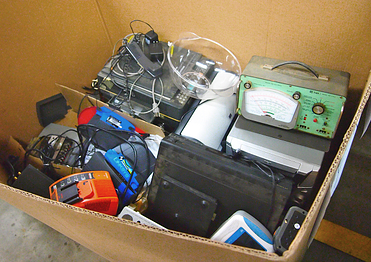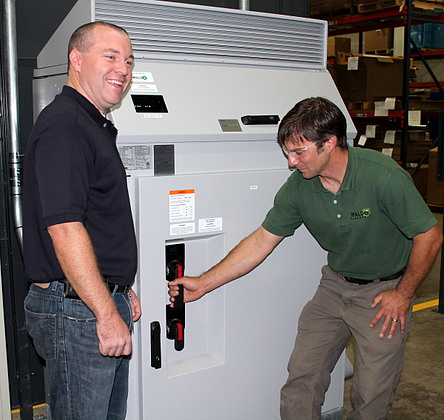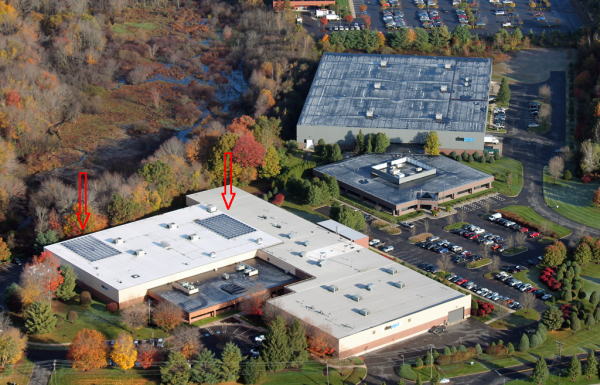Why brushless motor designs are gaining momentum for commercial truck and bus ventilation
By Bill McBaine
Not so many years ago, designers of commercial truck and bus ventilation systems had only a few choices for motors. These products offered economical solutions but were not without issues.
Then came a global fuel crisis, which forced truck fleet owners to re-think how they operate their vehicles. Because it was no longer fiscally practical to idle a large diesel engine during evening truck stops to power and ventilate the sleeper cab, HVAC manufacturers began to integrate their HVAC and power generation systems into auxiliary power units.
Mass transit authorities faced similar challenges: save fuel while providing adequate ventilation for passengers. They pushed for reducing buses’ down time and improving their life span, which required a new solution: a DC input motor device capable of drastically longer service life.
As a global manufacturer of air movers and drive systems, our challenge was to adapt to these new realities. The result? A brushless motor design that offers longer life, lower maintenance, better fuel efficiency and improved performance.
Let’s look at the old-versus-new options for powering ventilation systems in commercial vehicles.
Low voltage (12/24VDC) brush commutation motors, offered by many suppliers, were the standard for many years. Featuring a consumable carbon brush in contact with a commentator to provide power to various motor windings, they offered a simple, inexpensive approach.
However, brush commutation motors have always been prone to wear-and-tear issues as they age.
The motor’s brush material is consumed over time through physical contact with the spinning commentator. This abrasive material becomes trapped within the motor, leading to bearing failure if it contaminates the grease. Typical brush life is 4,000 to 6,000 hours. “Long life” variations may exceed 10,000 hours but have unfortunately resulted in even greater amounts of abrasive brush material building up in the motor.
In addition, water penetration/condensation in brush commutation motors during extreme external temperature swings can result in moisture being drawn deep inside the unit (especially at the seams). Once trapped, this moisture cannot easily escape, leading to corrosion and shortened life span of the motor.
Another ventilation motor option, high voltage (230VAC) induction motors allow higher power levels at a lower amperage draw compared to 12/24VDC brush designs. On the down side, this approach requires a high-capacity AC power source, which adds a lot of additional expense to the system. These motors’ physical space requirements are also more suited to the mass transit industry/ bus market than for other types of commercial vehicles.
So what’s the third option? Automotive brushless commutation motors, which ebm-papst has refined over the past 10 years to offer truck and bus fleets better efficiency and performance.

The brushless generation of automotive motors introduces a Gortex membrane within the electronics components, allowing any condensation to be safely eliminated from the circuit board. Leading suppliers of HVAC systems within moving vehicles and equipment have embraced these designs, now used in quantities of hundreds of thousands of pieces in commercial and industrial vehicles.
Our third generation W3G300 fan, introduced to North America in 2011, and the new W3G385 fan, which joins ebm-papst’s brushless motor product family this year, build on the success of earlier models while offering new capabilities such as greater air performance, thinner and lighter construction, reduced power usage and lower noise levels.
As fuel prices continue to rise, we’ll keep listening to the needs of our mobile customers and their HVAC suppliers, developing and testing new improvements to our brushless motor systems.

If you’re a truck or bus fleet owner, manager or maintenance pro, we want to hear from you. What are your experiences with brushless motor systems? How can we continue advancing brushless motor designs?








 What keeps ebm papst’s team – our engineering, production and marketing people – fresh and energized? Observing the creativity and fun that 30,000 motivated young people can generate over three days during a riveting robotics event that’s called “The Olympics of the Mind.”
What keeps ebm papst’s team – our engineering, production and marketing people – fresh and energized? Observing the creativity and fun that 30,000 motivated young people can generate over three days during a riveting robotics event that’s called “The Olympics of the Mind.”


